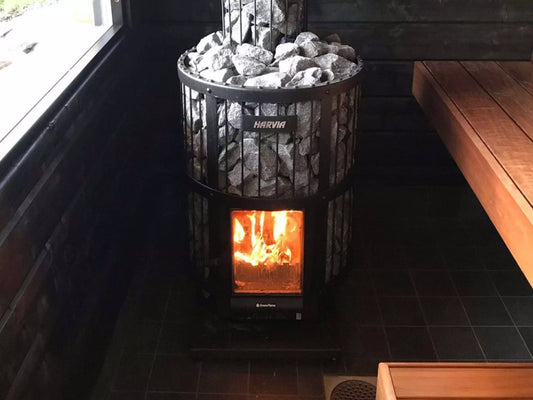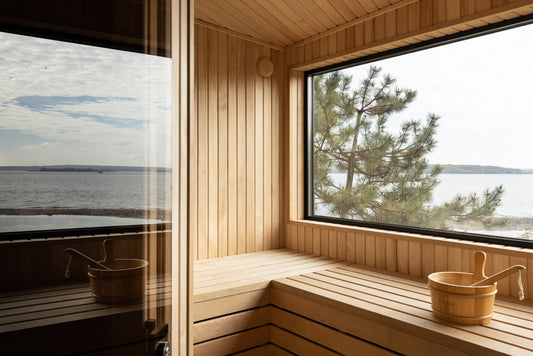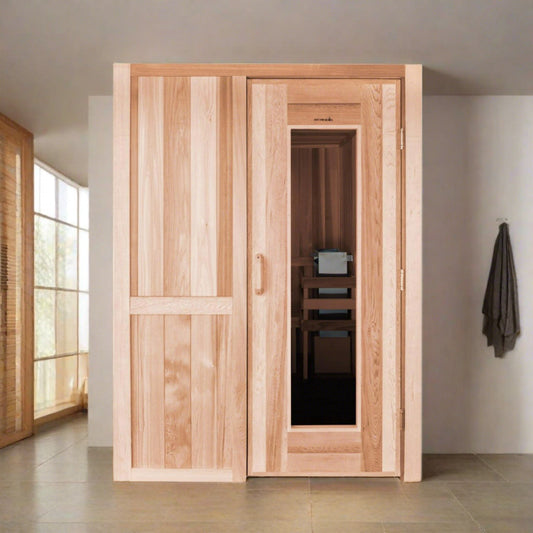
Saunas Health Benefits & Use
How hot will a sauna get?
180-194 Degrees Fahrenheit approximately.
How long should I stay inside a sauna?
Well, the amount of time you can spend - healthily - in a sauna is determined by a range of factors, but most importantly, your health and hydration before climbing in. If you're not adequately hydrated, you shouldn't stay inside a sauna for longer than 20 minutes, as you're risking dehydration.
However, if you're fit, healthy, hydrated, and you are an expert sauna user. In that case, you can stretch this out into a significantly more extended period, in the area of 30 - 45 minutes, even an hour.
Keep in mind that the timer starts when your body starts to sweat, this is when the health benefits begin to kick in.
What happens if you stay too long in a sauna?
Contrary to popular belief, higher temperatures do not correlate with more health benefits from a sauna; as long as your body begins to sweat, you've initiated the healing process. If you stay in a sauna too long, particularly a hot-air sauna, you risk severe dehydration and symptoms of heat-stroke like dizziness and headaches.
What should I do after a sauna session?
After using the Sauna, experienced users recommend taking a cold shower or a dip in an icy body of water before visiting for another session.
If you're not ready for a second round, take a shower and make sure to drink plenty of water.

What are some health benefits of the Sauna?
A sauna' dry heat has profound effects on the body. The pulse rate jumps by 30% or more, allowing the heart to nearly double the amount of blood it pumps each minute. Most of the extra blood flow is directed to the skin; in fact, circulation shunts blood away from the internal organs.
Sauna eases pain within the joints and muscles due to increased blood flow. Regular sauna use is shown to regulate the appetite, increase metabolism, and improve oxygen utilization, helping to fuel weight loss along with a reduction in body fat. Heat has been proven to impact your mitochondria positively, the 'batteries' powering your cells, helping your body naturally produce more energy and stay fit.
What should i wear in the sauna?
Before using a sauna, the one thing not to forget is to take off your work clothes and shower. This helps remove sweat and dirt before using a sauna and will help avoid stains and dirt accumulation on the benches and backrests of the sauna.
Now, if it is your first time in a sauna, you probably wonder what to wear in the sauna.
You probably know this but, it is common to go to the sauna naked. This is a common practice in Finland, whether in a private or public setting. Most Finns go to the sauna naked most of the time. If you are not Finnish, you may be more discreet and want to wear a bathing suit, a towel, or experience the authentic Finnish Sauna experience naked.
Home Saunas

What is the difference between a Modular Sauna and an Interior Pre-Cut Sauna?
A Modular Sauna is a penalized sauna that prebuilt, modular panels interlock into a freestanding sturdy sauna room. The ceiling panels are secured atop to enclose the room. The modular sauna option gives you the freedom to relocate at any time! Modular saunas can be installed inside or outside (with the addition of a roof kit option)
An Interior Pre-Cut Sauna is specifically designed for new construction or situations where you have a spare room that's already framed in and insulated. Your walls and ceiling will then need to be covered in plywood. A Pre-Cut Kit will include:
- A vapor barrier.
- T&G (Tongue and Groove) panels.
- Sauna benches.
- A sauna heater.
- Door.
All necessary trim pieces.
Interior Pre-Cut saunas are permanent and cannot be relocated.
What are the Pros & Cons of the different SAUNA heater types?
Gas Heaters

Pros - The Gas Heaters will provide a higher quality of heat that cannot be achieved by an electric heater.
Cons - Gas Heaters are more expensive and larger than most other heaters.
Electric Heaters

Pros - The Electric Heaters are the most common heaters on the market. They offer a simplistic installation and a cheaper breakthrough cost.
Cons - Electric Heaters will add to your monthly electrical bill, depending on usage.
Wood Burning Heaters

Pros - Wood Burning Heaters are the oldest type of sauna heaters to provide you with the most authentic sauna experience.
Cons - Maintaining a specific temperature is much more difficult with a Wood Burning Heater.
How does a traditional sauna differ from an infrared sauna?
A sauna is a room where the environment is very hot and dry. Water is scooped onto the sauna rocks to generate steam, so by definition; the infrared experience is not a sauna at all. Infrared penetrates the body with infrared rays and does not warm the actual room itself. Infrared panels achieve this at a low temperature and help relieve sore joints and muscles. A traditional sauna's wet/dry effect is a total body experience, which ultimately provides joint and muscle relief and a long list of other health benefits.
One of the most important things to remember when using a sauna is to take it slow. While saunas are generally considered safe and offer potential health benefits, it's essential to prevent dehydration. And remember, how you feel and how your body responds to the heat can be different each time.
Is a sauna expensive to operate?
A sauna heats up fairly quickly and is only ON when in use. The average home sauna costs around $3-5 per month to operate when used for one hour- 3 days a week.
WHAT ARE THE DIFFERENCES BETWEEN AN INDOOR SAUNA AND OUTDOOR SAUNA?
There are many similarities and differences between indoor saunas and outdoor saunas. As their name implies, the main difference is their location.

INDOOR HOME SAUNAS
If going indoors, you will also need to decide if you will be having a whole room dedicated to the sauna or just a part of the room.

OUTDOOR HOME SAUNAS
Some examples of outdoor saunas include the traditional barrel sauna model. The barrel sauna concept does not only enhance your backyard but your health. These easy to assemble, practical and beautiful sauna rooms provide a unique look and outdoor living experience.









